The hare and the tortoise. Brer Rabbit. The lion and the mouse. The stork and the fox. These are old childhood friends for many of us. They’ve also taught us valuable lessons. In fact, fables often form the fiber of our childhood.
In this post, you’ll learn about what goes into a good folktale anchor chart. I have also curated some useful resources and given you some guidance about using them.
Table of Contents
- Elements that go into a good folktable anchor chart
- Different ways of approaching folktale anchor charts
- Resource from TeachSimple
- Free Resources
- Final thoughts on Fable anchor charts
Elements that go into a good folktable anchor chart
A good folktale anchor chart will have a clearly defined heading. This must be made to stand out, by using bright colors, a bigger font, position on the chart (center or top) or illustrations.
The chart must state the main characteristics of folktales. This should include:
- The story is short.
- Three or four characters (humans or animals that behave like humans).
- A moral or lesson.
- Possibly a villain.
An anchor chart focusing on folktales or fables should include illustrations, particularly those that relate to well-known stories. This will help the students to make the links between stories they read.
Different ways of approaching folktale anchor charts
When you go through the resources I have curated below, you’ll see that most of them use the characteristics of folktales along with drawings. These either illustrate the point, or refer to specific stories. This is a useful way of approaching the topic. However, here are a few ideas of how you could create folk story anchor charts in different ways.
Instead of beginning the anchor chart with the obvious heading ‘folktales’, you could head it something like ‘Do stories teach lessons?’. Use a story you have read with the students to find the answer to the question. From this, you can fill in sections on the chart that relate to the elements of a folktale.
You could also use a blank anchor chart to fill out with your students. On the chart, put the headings: characters, moral / lesson and length. Leave a gap for the heading of the chart. The students can work in groups to try to fill in the chart from a specific story.
Resource from TeachSimple
The Fables Anchor Chart focuses on understanding ‘What we find in a fable’. Most of the elements that are listed relate to folktales too. The resource is aimed at grades 1 – 3. There are 4 charts. The first is an example, while the other three have spaces for students to fill in what is missing. It is a great interactive resource.
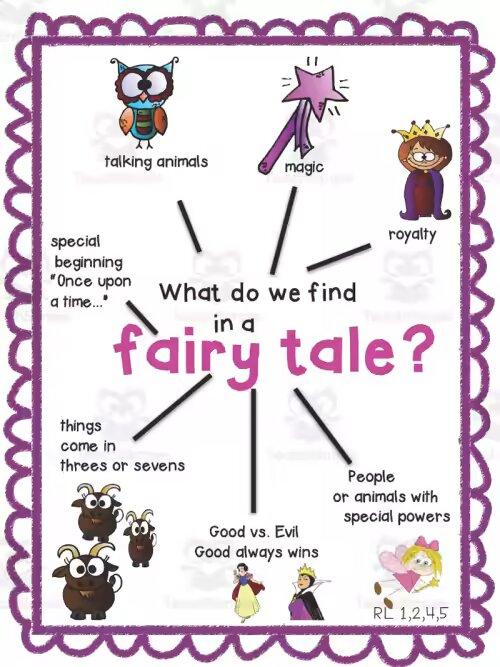
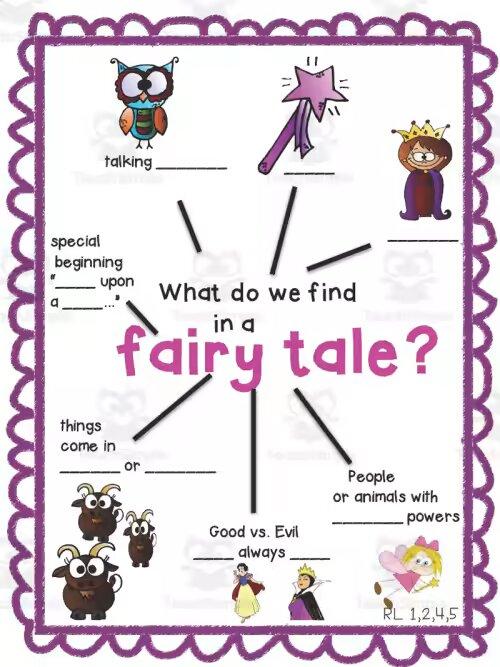
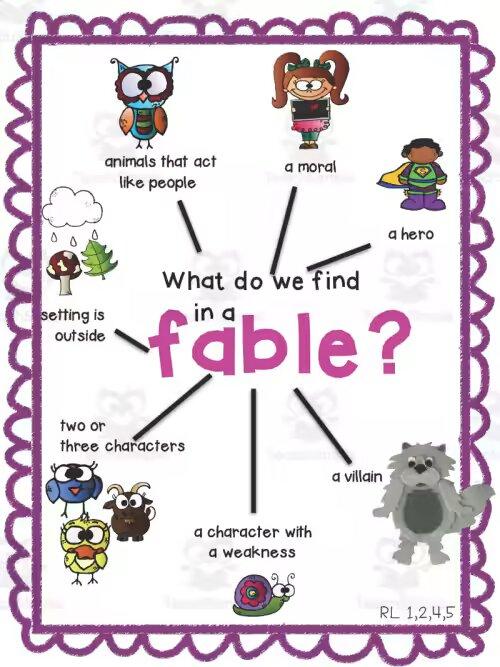
Five For a Fabulous Friday!
This resource is a great way to begin teaching Folktales.
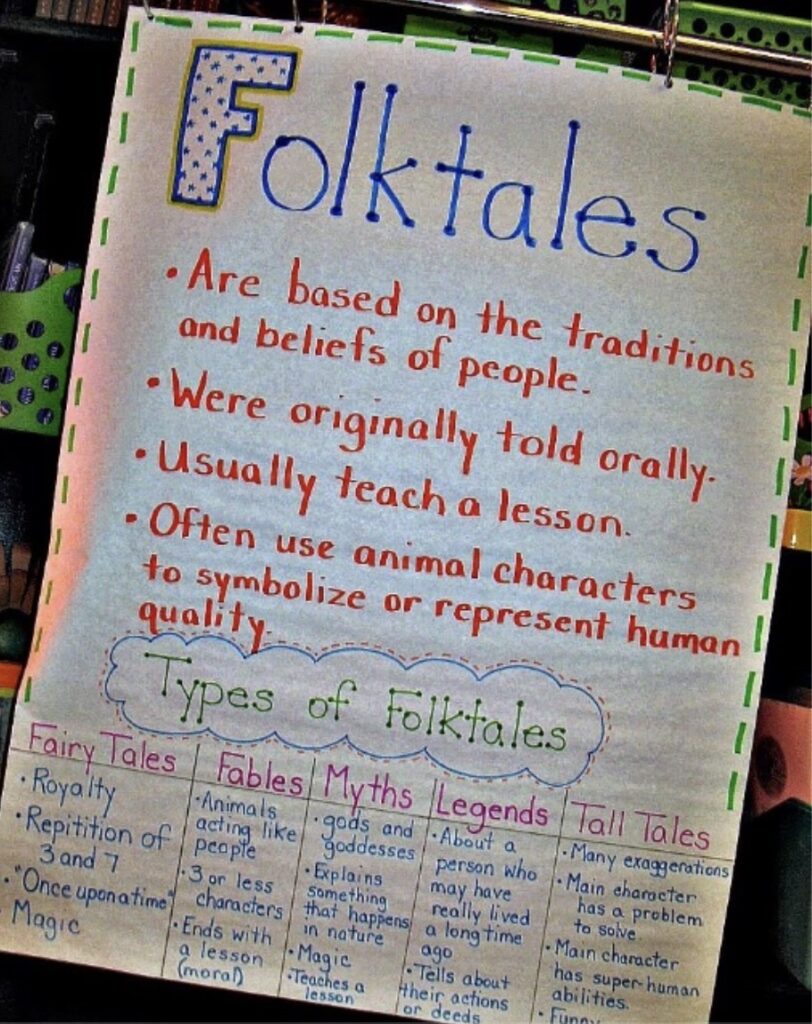
It begins by carefully spelling out the characteristics of a folktale. You can then use the table at the end to guide the students to find the main elements of the different types of tale. For younger grades, you can focus only on fables and fairy tales, with which they will be familiar.
Fable Poster
This is a simple anchor chart about Fables.
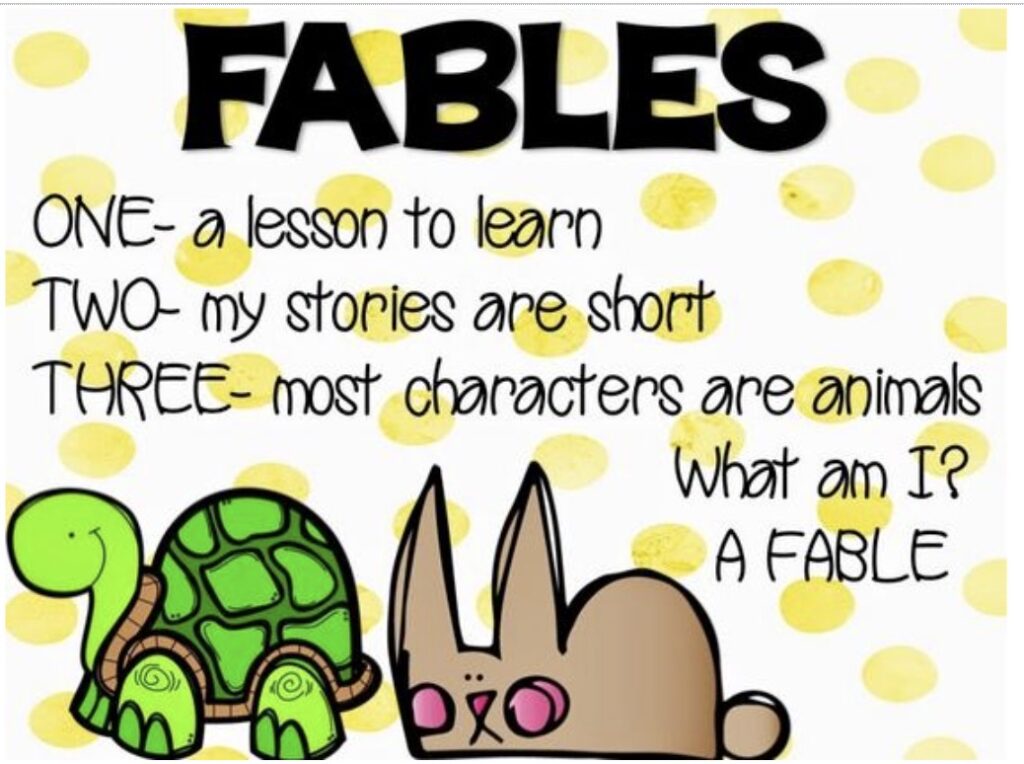
What is great about this anchor chart is the simplicity and the summary points that are made so clearly. It reduces the characteristics of a fable to the essence, which is useful for lower grades to work from. You can use it as an inspiration for your own work. It’s also a very solid reference from which students can work to fill in worksheets, or make their own anchor chart, about the elements in a fable.
Using Fables to Teach Reading Standards
This anchor chart is specifically about the Lion and the Mouse.
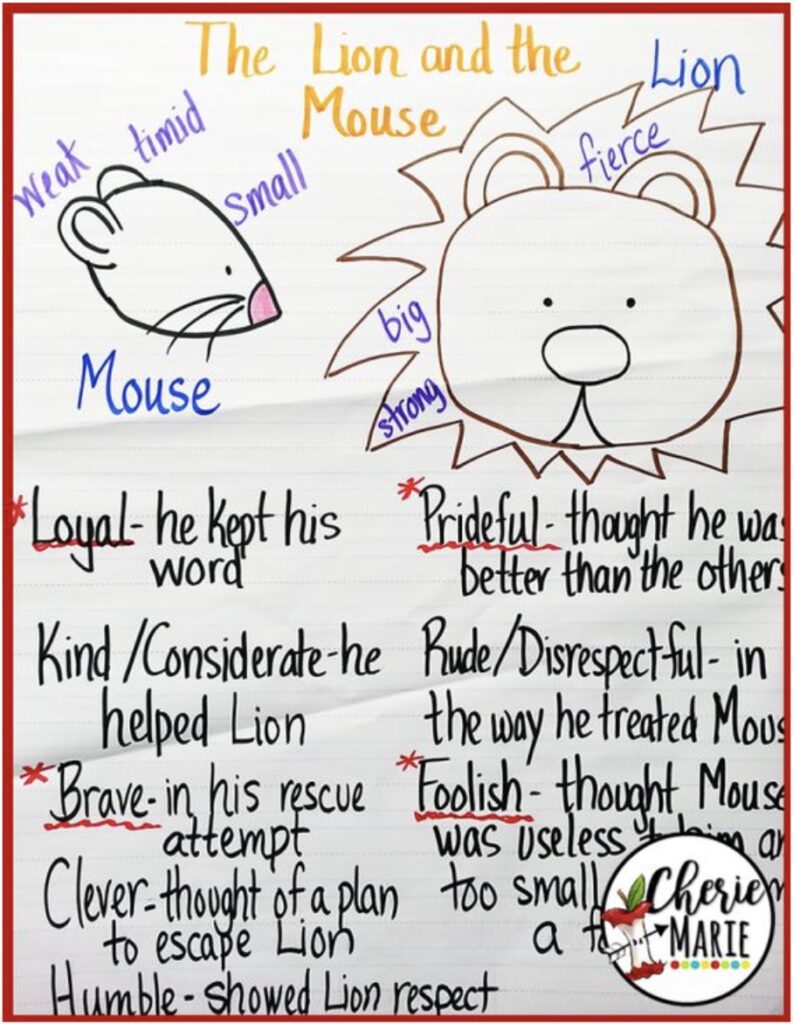
I’ve included this resource, because it relates directly to fables, but is about one specific story. This makes it a good example / reference for you and the students to work from when you look at a particular fable. It would make a really effective follow-up anchor chart to a more general introductory chart that looks at fables in general. This lends itself to an interactive activity, where the students apply what they have learned.
Elements of a Good Folkrale Anchor Chart
This resource presents Elements of Folktales.
In this resource, the drawings are cute and the students will relate to them. The main elements of a folktale are stated clearly. I find the illustrations and use of color will capture the students’ attention and help to organize the content.
Characteristics of a Folktale Anchor Chart
This anchor chart gives the characteristics of a folktale.
This is a relatively uniform anchor chart, which is organized effectively. There is quite a lot of information which gives you the opportunity to work through it with your students. You can even create the divisions and then fill them in with the class.
If you look at the characteristics that are mentioned on the chart, they are mostly similar to those of fables. This is a great chart for making the link between the two.
Free Resources
Folktales Fairytales and Fables Oh My
This anchor chart looks at different types of folktales.
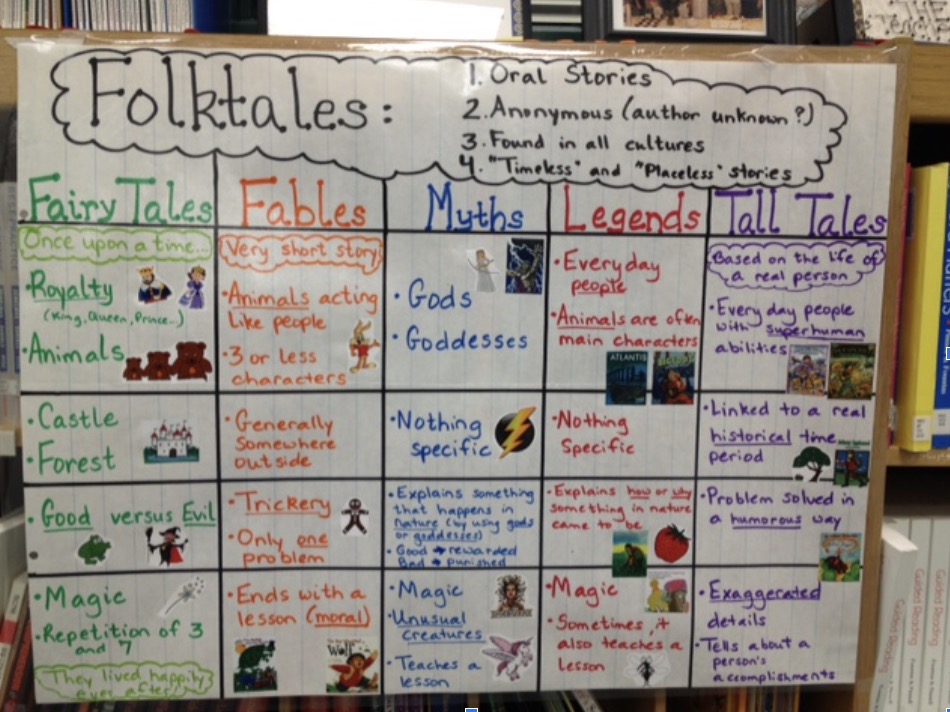
I like this anchor chart, because it lays out differences between the different types of folktales. It is suited for slightly older grades, because grades 1 – 3 don’t need to know the details of each type of story. They will focus on fables and maybe fairy tales. With higher grades, who may read different types of stories, this can be useful.
Fables, Folk Tales and Central Message
This anchor chart compares Folk Tales and Fables.
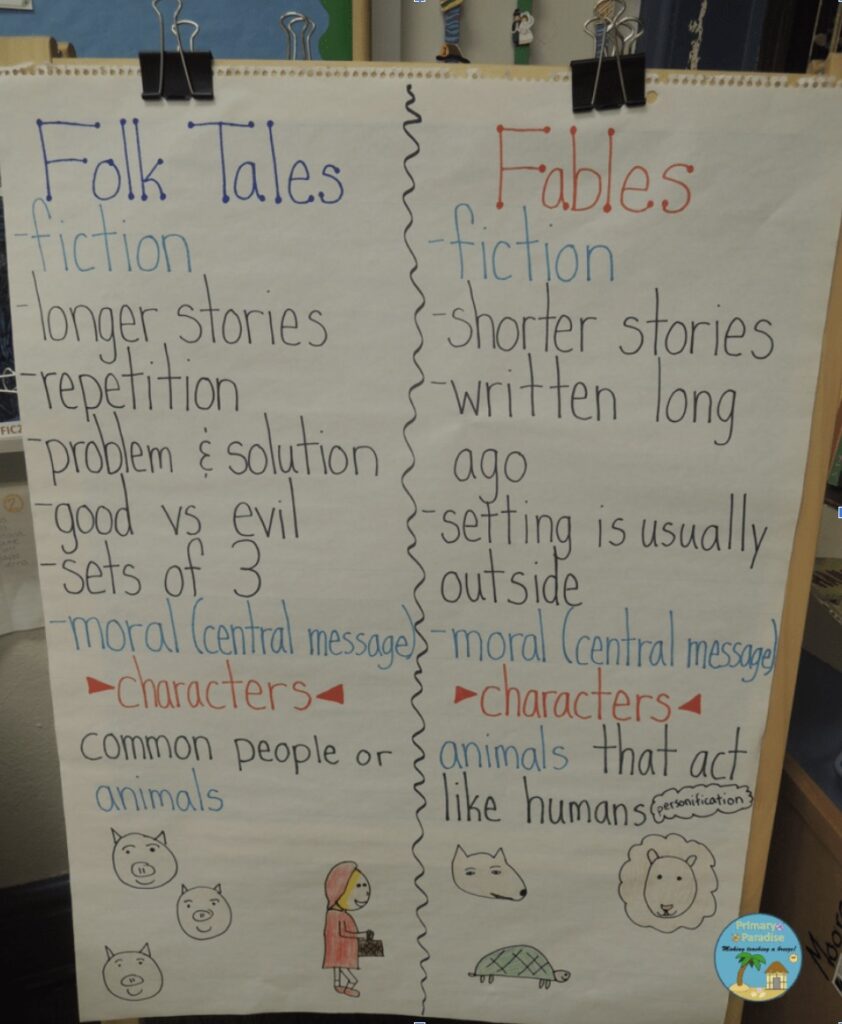
Depending on the grade, you will come across the two ideas of fables and folk tales. In the lower grades, it is usually possible to run them together, as many of the characteristics are similar. As you get to the slightly higher grades, though, it becomes relevant to distinguish between them. This anchor chart is a good starting point. It will be particularly useful as a reference if your students work from specific stories and look for the characteristics. Higher grades could write their own stories and present an argument for why their story is a folk tale or a fable.
Final thoughts on Fable anchor charts
Anchor charts that deal with folktales usually present the elements of a story and some examples (which may be drawn or described). Choose or create an anchor chart that the students can use as a reference when they read, analyze and write folktales on their own.
